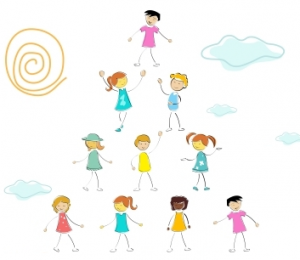![question-mark[1]](http://www.drcourtneyknapp.com/wp-content/uploads/2013/01/question-mark1-300x300.png)
Early on in my play therapy career I learned that asking questions during a play session with a client is frowned upon. I understood the reasoning behind it right away….questions put me in charge of the session and pull the client out of the moment, out of his/her play. Questions also put children on the spot and can make them feel anxious. Just because I understood why I shouldn’t be asking questions did not mean that it was an easy task. It took me at least a year to master the statement driven interaction versus the question driven interaction. To this day I still catch myself asking questions, but at least I’m aware of it now! I teach this concept to parents as well and encourage them to have special play time with their child…avoiding questions during that time. I also challenge parents to use more statements throughout the day with their child rather than questioning. For example: “I wonder how your day was.” instead of “how was your day?”. It’s a very subtle difference but children pick up on these small communication changes. Until you’ve been challenged not to ask questions, you don’t realize just how many questions you ask your child everyday!



